You’re excited to start your home fitness journey, build strength, and boost your energy – that’s fantastic!
But before you jump into your first squat or press, we need to talk about the absolute number one priority – YOUR SAFETY.
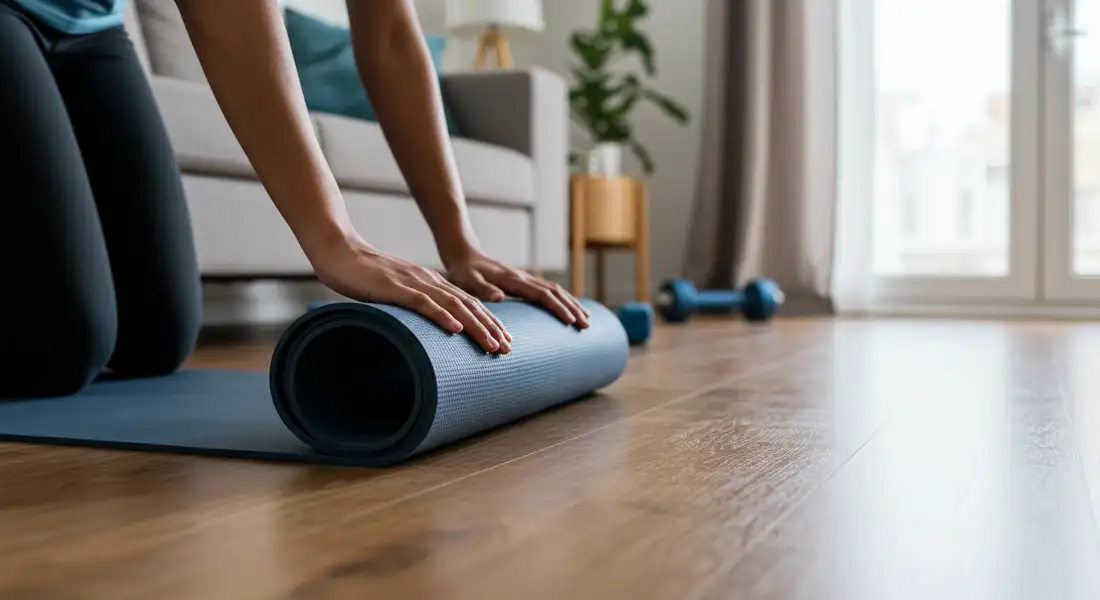
Working out at home offers incredible freedom and convenience, but it also means you are solely responsible for creating a safe environment and exercising correctly.
Ignoring safety doesn’t just risk injury; it can derail your progress, kill your motivation, and potentially lead to long-term problems.
This guide outlines the fundamental, non-negotiable safety rules every single beginner MUST understand and follow.
Think of these rules not as restrictions, but as the essential foundation that allows you to exercise effectively and sustainably for years to come.
Safety underpins every aspect of your fitness plan discussed in our Beginners Guide to Starting Home Fitness – Your First Steps.
It’s essential for achieving your Setting Realistic Fitness Goals, using Essential vs. Nice-to-Have Home Fitness Gear correctly.
Managing your How Much Space Do You Really Need?, following you Creating a Beginner-Friendly Workout Schedule, and ultimately, Staying Motivated When Working Out Alone (because nothing crushes motivation faster than an injury!).
Let’s establish your safety baseline.
Before You Even Start – Foundational Checks
Get these right before your first session:
Consult Your Doctor (Especially with Pre-existing Conditions)
This is standard advice for a reason.
If you have any underlying health issues (heart conditions, high blood pressure, diabetes, past injuries, joint problems, etc.), are pregnant, or take certain medications, check with your doctor before starting any new exercise program.
They can advise on safe activities and any necessary modifications.
Consider this your official “green light.”
Clear Your Space – Eliminate Hazards
Remember our guide on How Much Space Do You Really Need?
Put it into practice!
- Ensure you have adequate, clear floor space to move freely for your planned exercises.
- Remove ALL tripping hazards: Loose rugs, toys, cables, shoes, clutter.
- Check for good lighting so you can see clearly.
- Make sure you have enough vertical and horizontal clearance to avoid hitting furniture, walls, or ceilings during movements. A safe space is step one.
The Workout Itself – Core Safety Practices
These are crucial during every single workout:
ALWAYS Warm-Up (Non-Negotiable!)
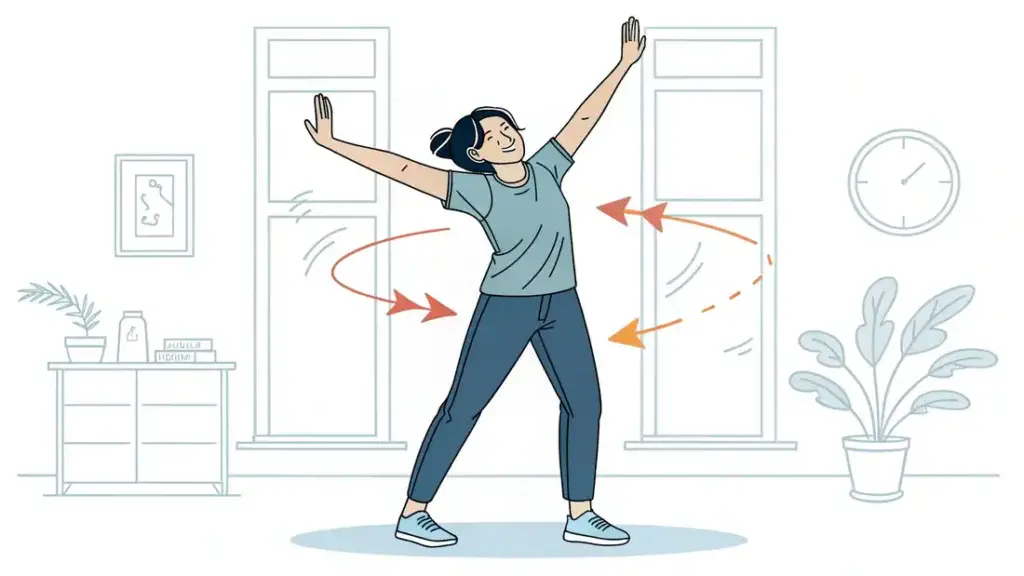
Skipping the warm-up is like starting a car in freezing weather and immediately revving the engine – you risk damage.
- Why: It gradually increases heart rate and blood flow, warms up muscles and joints making them more pliable, prepares your nervous system, and significantly reduces the risk of strains or tears.
- What (5-10 mins): Start with light cardio (marching/jogging in place, jumping jacks) followed by dynamic stretches. These involve active movements through a range of motion (e.g., arm circles, leg swings, torso twists, cat-cow stretch). Avoid holding static stretches before your main workout.
- How: Keep movements controlled and comfortable.
Master Proper Form Over Speed or Weight (CRUCIAL!)
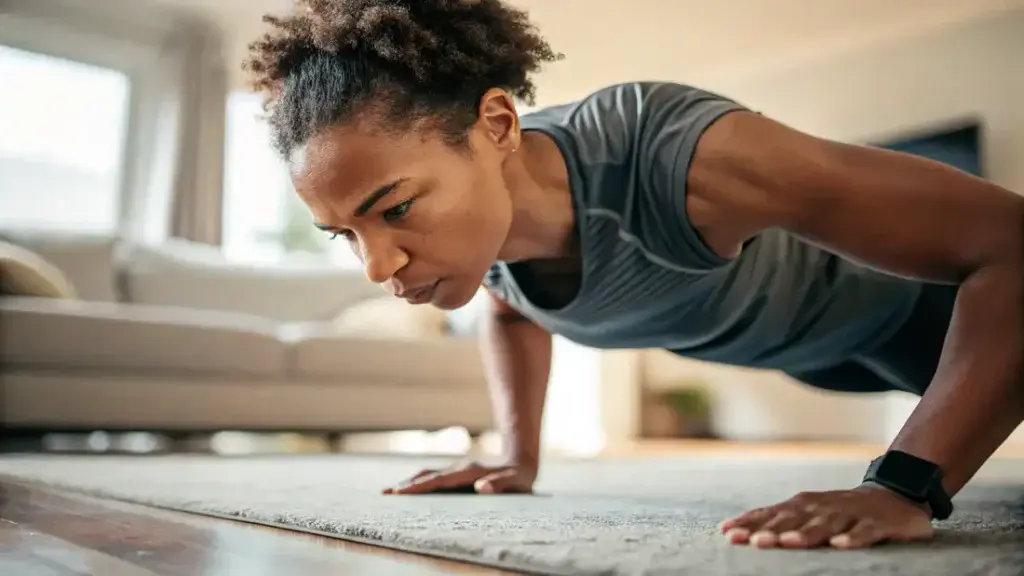
If you remember only one rule, make it this one. Excellent form is paramount.
- Why: It ensures you’re actually working the intended muscles effectively AND it’s the single most important factor in preventing injuries like strains, sprains, and joint problems caused by poor mechanics.
- How:
- When learning a new exercise, go SLOWLY and focus entirely on control and feeling the movement correctly.
- Use a mirror if possible to check your body alignment (e.g., straight back during squats, core engaged during planks).
- Watch reliable, qualified instruction videos – pay attention to detailed cues on posture and movement path.
- Quality over quantity, ALWAYS. 5 perfect repetitions are infinitely better and safer than 15 sloppy ones.
- Do NOT add heavier weights, more resistance, or increase speed until your form with the basic version is consistently excellent.
Breathe Correctly – Don’t Hold Your Breath!
It’s a common unconscious habit, especially when straining.
- Why: Holding your breath can significantly increase blood pressure and reduce oxygen delivery to working muscles. Proper breathing helps stabilize your core and maintain energy.
- How: While it can vary slightly, a general rule is to exhale during the most difficult part of the exercise (the exertion phase – e.g., pushing up from the floor in a push-up, lifting the weight in a curl) and inhale during the easier phase (e.g., lowering down in a push-up, lowering the weight). The most vital thing is simply to keep breathing steadily throughout the movement.
Listen Intently To Your Body – Pain vs. Discomfort
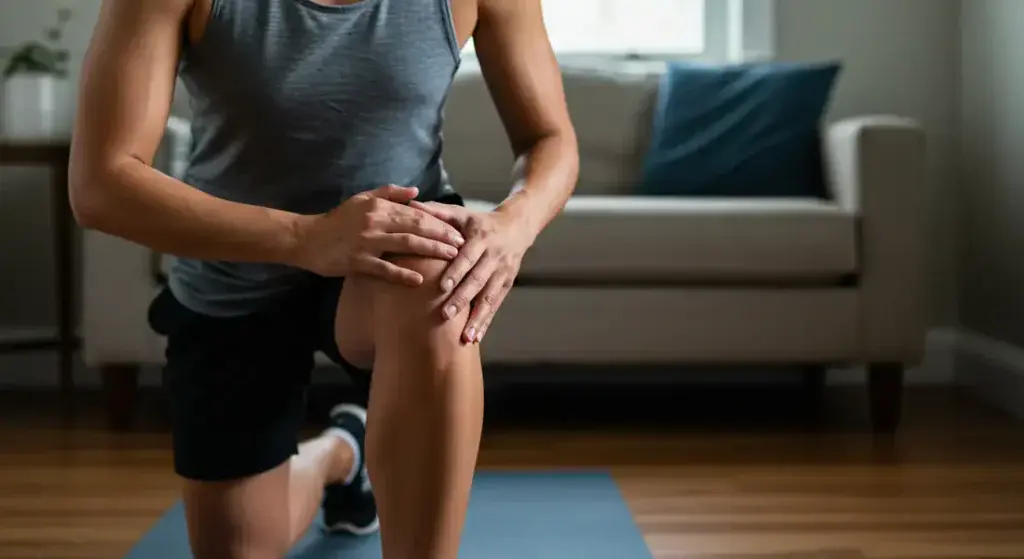
Your body sends signals – learn to interpret them correctly. Ignoring pain is a direct path to injury.
- Know The Difference:
- Muscle Fatigue/Burn/Discomfort: This is NORMAL and expected during exercise. It feels like tiredness, burning, or aching within the muscle itself. It usually builds gradually during a set and subsides quickly after you stop. This is generally okay.
- Sharp, Shooting, Stabbing Pain: This is NOT NORMAL. It often comes on suddenly, feels intense, might be localized to a specific spot (muscle or joint), or radiate. THIS IS A RED FLAG. STOP THE EXERCISE IMMEDIATELY.
- Joint Pain: Pain felt directly in a joint (knee, shoulder, elbow, wrist, hip, ankle) during or after movement is also a RED FLAG. Don’t ignore clicking, popping, or grinding if accompanied by pain. STOP THE EXERCISE IMMEDIATELY.
- The Rule: Never “push through” sharp, stabbing, or joint pain. Try modifying the exercise (e.g., shallower squat), but if the pain persists, stop that exercise for the day.
Progress Gradually – Avoid Doing Too Much Too Soon
Enthusiasm is great, but rapid jumps in workload are a leading cause of overuse injuries.
- Why: Your muscles, tendons, ligaments, and cardiovascular system need time to adapt and strengthen. Overloading them suddenly leads to breakdown, not progress.
- How: Follow the principles from our Creating a Beginner-Friendly Workout Schedule guide. Increase only one variable slightly at a time (e.g., add 1-2 more reps per set, increase workout duration by just 5 minutes, increase weight by the smallest increment possible, OR add an extra workout day only after consistently managing your current schedule for several weeks). Be patient!
After the Workout – Finishing Safely
Don’t just stop abruptly!
ALWAYS Cool Down (Non-Negotiable!)
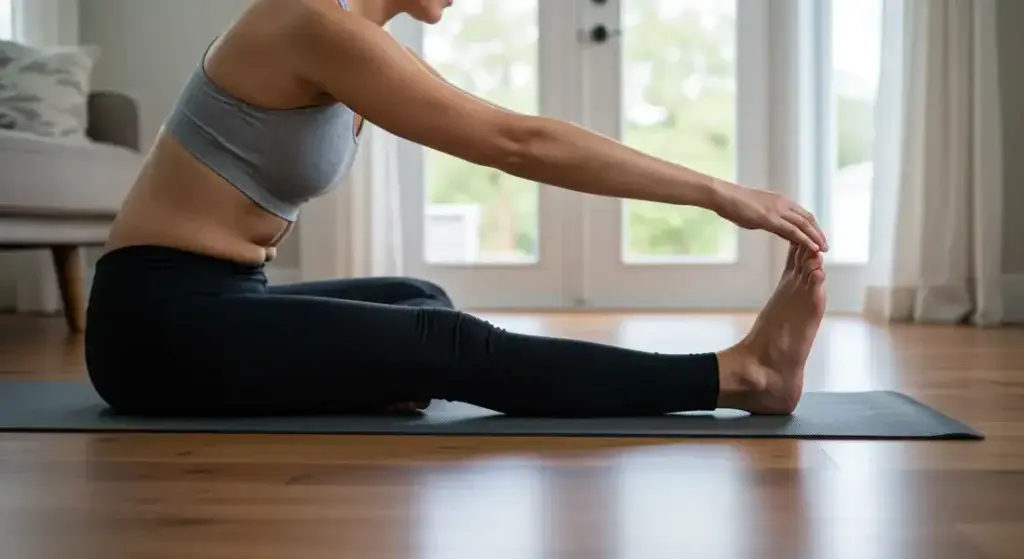
Just as important as the warm-up.
- Why: It helps your heart rate and breathing return gradually to normal, may help improve flexibility over time, can potentially lessen muscle soreness (DOMS – Delayed Onset Muscle Soreness), and promotes a sense of relaxation.
- What (5-10 mins): Start with a few minutes of very light activity (slow walking). Follow this with static stretches. These involve holding a gentle stretch for a specific muscle group for 15-30 seconds without bouncing. Focus on the major muscles you worked during your session.
- How: Stretch only to the point of mild tension or pull, never to the point of pain. Breathe deeply and relax into the stretch.
Ongoing Safety Habits
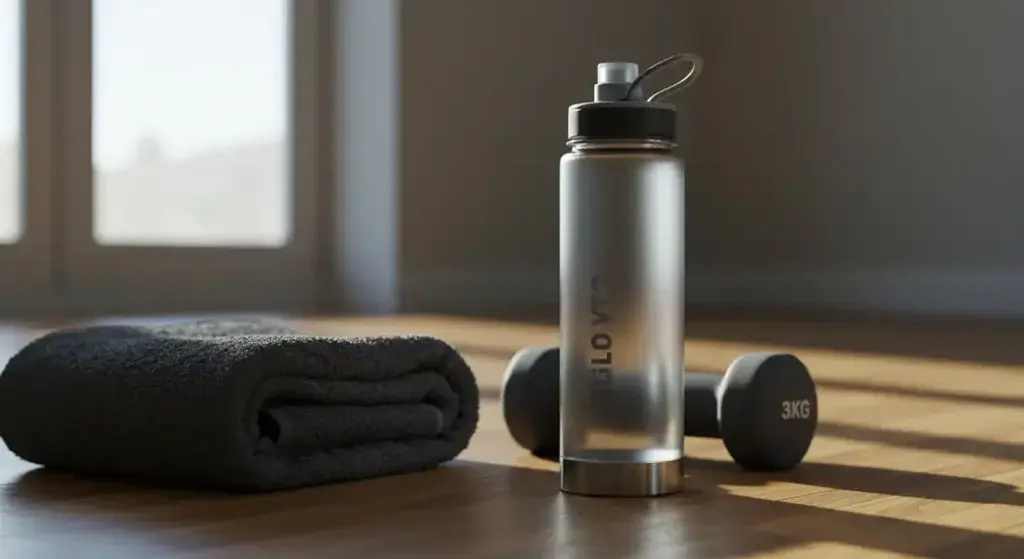
Make these part of your routine:
- Stay Hydrated: Drink water before you start, take small sips during your workout (especially if it’s longer or intense), and rehydrate afterwards. Dehydration affects performance, concentration, and overall bodily function.
- Check Your Gear: Before each use, quickly inspect resistance bands for any nicks, tears, or weak spots (snap-back injuries are painful!). Ensure dumbbell collars or adjustable weight pins are secure. If using machines, check for stability. Never use damaged equipment.
- Have a Phone Nearby: Especially if you live or exercise alone, keep your phone accessible in case of an emergency or unexpected injury where you might need assistance. Letting someone know your general workout times is also a good habit.
Before EVERY Workout, Ask
- Cleared by Doctor (If necessary based on health)?
- Is my workout space completely CLEAR and free of hazards?
- Am I planning a 5-10 min Warm-Up (light cardio + dynamic stretches)?
- Am I committed to focusing on Proper Form above all else?
- Will I remember to Breathe consistently?
- Do I understand the difference between muscle fatigue and Pain (STOP if sharp/joint pain)?
- Is my planned progression Gradual?
- Am I planning a 5-10 min Cool-Down (light activity + static stretches)?
- Am I Hydrated?
- Is my Gear safe and in good condition?
- Is my Phone nearby?
Conclusion – Safety Enables Success
Think of these safety rules as your essential toolkit for a long, successful, and enjoyable home fitness journey.
They aren’t meant to restrict you, but to protect you and ensure you can keep showing up consistently without unnecessary setbacks.
Being mindful, listening to your body, and prioritizing correct form are the smartest things you can do.
Your action step: Don’t just skim this page.
Read it carefully. Review the checklist before each workout until these practices become second nature.
Make safety an automatic, ingrained habit.
You’ve now covered the absolute fundamentals of starting home fitness safely and effectively!
With this knowledge, you’re much better prepared to explore further.
Head back to the main Beginners Guide to Starting Home Fitness and consider diving into guides on specific equipment or workout styles that align with your goals and interests, such as:
Stay safe, stay consistent, and enjoy the process!
References & Further Reading
- Cheung, K., Hume, P., & Maxwell, L. (2003). Delayed onset muscle soreness : treatment strategies and performance factors. Sports medicine (Auckland, N.Z.), 33(2), 145–164. https://doi.org/10.2165/00007256-200333020-00005
Disclaimer: This information is for general knowledge and informational purposes only, and does not constitute medical advice. Exercise involves inherent risks, including the risk of injury. Always consult with a qualified healthcare professional before beginning any new fitness program or making any changes to your healthcare routine, especially if you have pre-existing health conditions. Stop exercising immediately if you experience sharp pain, dizziness, or shortness of breath. ReliableHomeFitness.com assumes no liability for any injury sustained during exercise.
